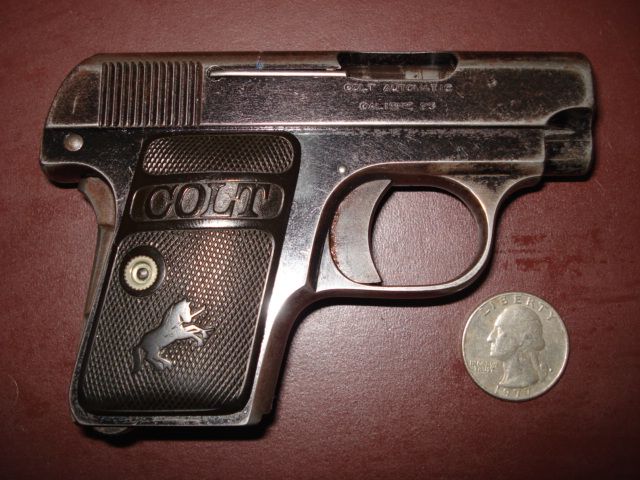Glock19Fan
New member
I decided to do a fair, even test today comparing the .22LR and the .25ACP from pocket pistol length barrels. The .22LR was fired from a 2.5 inch barrel, and the .25ACP was fired from a 2.25 inch barrel. Ammunition used was typical, full powered generic ammunition for each caliber- CCI 40 grain RN Mini Mags for the .22LR, and Aguilas 50 grain FMJ in .25ACP. Rounds were fired from a distance of 5 feet.
The test was done by firing 3 rounds of each caliber through a fresh 2x4, with water jugs stacked behind it to measure penetration.
EDIT: Here is a picture of the board. Many seem to think its a 1x6 but its a 2x4.

Here is the setup.

All rounds fired from both calibers fully penetrated the 2x4 with ease. Here are the entrances. Notice the much larger hole made by the .25ACP.

Here are the exits.

Here are the recovered bullets.

The .22LR rounds fully penetrated the first jugs, while two of them continued into the second jug, denting the back side of the second jug. The third round tumbled in the first jug, exiting near the bottom, striking the concrete table, bouncing up and denting the second jug. It was recovered on the table between the first and second jug.
The .25ACP rounds fully penetrated the first jug. Two of the bullets continued through the second jug, exiting and impacting a cloth backstop. The third bullet made a large dent on the backside of the second jug, but did not exit.
To be honest, this test surprised me. I expected to get a little more penetration out of the .22LR becuase of the higher velocity and smaller size, but it seems that the tough construction of the .25ACP bullet combined with the heavier weight seemed to be the advantage.
Conclusion: This test may or may not be scientific. It really depends on your definition, but it was equal. It is clear that the .25ACP outperformed the .22LR, and while the difference is fairly small, I do think the wise choice for self defense would be to go with the .25ACP. It is more inheritely more reliable, and from similar length barrels is more powerful.
To be clear, I DO NOT recommend either of these for self defense but for the people that cannot handle a larger caliber, I think the .25ACP would be the way to go.
The test was done by firing 3 rounds of each caliber through a fresh 2x4, with water jugs stacked behind it to measure penetration.
EDIT: Here is a picture of the board. Many seem to think its a 1x6 but its a 2x4.

Here is the setup.

All rounds fired from both calibers fully penetrated the 2x4 with ease. Here are the entrances. Notice the much larger hole made by the .25ACP.

Here are the exits.

Here are the recovered bullets.

The .22LR rounds fully penetrated the first jugs, while two of them continued into the second jug, denting the back side of the second jug. The third round tumbled in the first jug, exiting near the bottom, striking the concrete table, bouncing up and denting the second jug. It was recovered on the table between the first and second jug.
The .25ACP rounds fully penetrated the first jug. Two of the bullets continued through the second jug, exiting and impacting a cloth backstop. The third bullet made a large dent on the backside of the second jug, but did not exit.
To be honest, this test surprised me. I expected to get a little more penetration out of the .22LR becuase of the higher velocity and smaller size, but it seems that the tough construction of the .25ACP bullet combined with the heavier weight seemed to be the advantage.
Conclusion: This test may or may not be scientific. It really depends on your definition, but it was equal. It is clear that the .25ACP outperformed the .22LR, and while the difference is fairly small, I do think the wise choice for self defense would be to go with the .25ACP. It is more inheritely more reliable, and from similar length barrels is more powerful.
To be clear, I DO NOT recommend either of these for self defense but for the people that cannot handle a larger caliber, I think the .25ACP would be the way to go.
Last edited:


